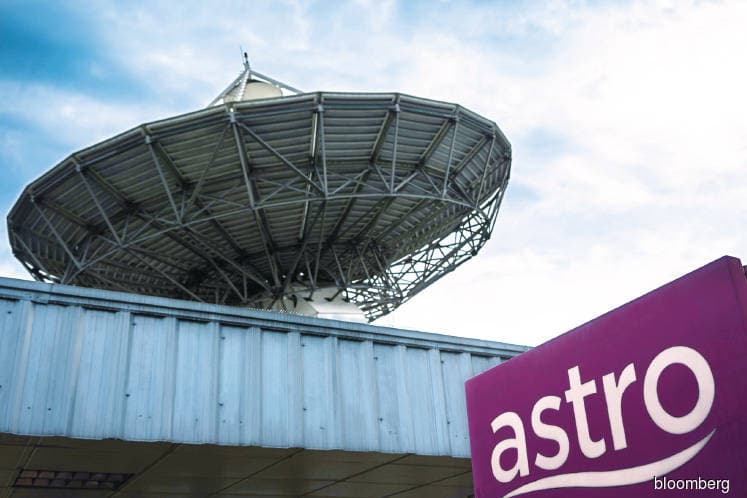
This article first appeared in The Edge Financial Daily on April 23, 2019
Astro Malaysia Holdings Bhd
(April 22, RM1.49)
Maintain hold with an unchanged target price (TP) of RM1.50: Astro Malaysia Holdings Bhd’s Go Shop sales grew about 30% year-on-year (y-o-y) while advertising expenditure (adex) fell 5% (due to a tax holiday) for the financial year ended Jan 31, 2019 (FY19). Management intends to continue to grow its home-shopping arm and further extend its reach in the local adex market to sustain revenue. The group has allocated more home-shopping slots in various channels other than the three full-fledged Go Shop channels. With only 1.8 million registered users for Go Shop versus Astro’s 5.7 million registered households, we believe this segment has much room to grow, driven by Star Power and Astro’s wide user penetration rate. Separately, citing sources online, TV is deemed as the most powerful adex medium, although digital advertising has been growing exponentially in recent years. Hence, the group is looking to reinvent Malaysia’s adex scene by leveraging its TV and digital data to advocate targeted advertising. We assume 13% and 5% y-o-y increases in FY20 Go Shop and adex revenues respectively.
The National Fiberisation and Connectivity Plan could increase Astro’s chances of bundling with other Internet service providers (ISPs) which will enable the group to monetise its large array of content. Recall that Astro and Tenaga Nasional Bhd on Jan 19 rolled out the bundling of broadband Internet and Family Pack channels for eligible residents in Jasin, Melaka, and management said it is also negotiating with other ISPs. We believe such bundles would limit the downside risk in Astro’s pay-TV segment as we see more NJOI customers upgrading to the new package amid cheaper offerings. We note that the initial consumer response in Jasin has been very encouraging.
Albeit often touted as a major threat to Astro, over-the-top (OTT) holds a different proposition, in our view, as Malaysians still spend over 75% of their daily TV viewing on Astro’s vernacular content, and as we are doubtful that OTT platforms such as Netflix and iflix can completely replace satellite/cable TV in the foreseeable future given their limited capacity for live streaming.
Piracy remains the main reason for Astro’s dwindling subscription revenue, with at least 29 illegal sites airing World Cup 2018. Positively, it was reported that Malaysia may follow Singapore’s proposal to ban the sale of media streaming boxes which pose a huge threat to the industry. We gather that the government may require ISPs to adopt dynamic ISP blocking in an effort to clamp down on piracy. With Astro often being Malaysia’s limited content buyer for major international events, management is hopeful the government will soon act to support the media sector.
After a long delay, it is believed that the shutting down of free-to-air (FTA) TV’s analogue channels will be concluded in June in an effort to improve viewers’ experience. Moving forward, users will need to pay a one-off cost of about RM400 for set-top boxes for digital viewing. While MYTV is the broadcast service provider selected to spearhead the national digital terrestrial television roll-out, we believe users might opt for Astro’s NJOI, which is also a free satellite-based TV service with more channels available versus FTA TV.
FY19 adex dropped 4.8% y-o-y, while content cost increased 11.7% y-o-y owing to the second quarter of FY19’s (2QFY19) benign performance on the back of the World Cup and a tax holiday which lowered advertising activities. Positively, FY20 adex is expected to increase 5% with content cost normalising to 35% of TV revenue amid the absence of any sporting event and resumption of the tax regime. While financing cost would remain high as the weak ringgit has lifted the mark-to-market revaluation of the M3B transponder’s lease liability, Astro has started hedging 40% of its M3B transponder lease liabilities for the first time in 4QFY19. Note that the lease liabilities for M3B (satellite)(which contains 18 transponders) are still incurred in US dollars, while that for the M3 and M3A have been converted into ringgit.
Astro is streamlining its operating costs (content, marketing and distribution, administrative and maintenance) through various cost rationalisation efforts, and it started to reap benefits in 3QFY19. We gather that the voluntary separation scheme exercise that was finalised in February would contribute net pre-tax savings of RM400 million a year starting FY20. Moreover, Astro has been actively renegotiating its content cost with key content providers due to the proliferation of piracy which has caused an array of content losing its exclusivity.
We expect FY20 core net profit to rise 12% y-o-y on the back of normalisation of adex and content costs. Various cost rationalisation efforts will offset the structurally weak pay-TV demand. We also introduce our FY22 net profit forecasts. We maintain “hold” and our TP of RM1.50, implying 12.9 times FY21 forecast price-earnings ratio and 6.8 times enterprise value to earnings before interest, taxes, depreciation and amortisation, with an attractive dividend yield of 7.7%. The entry price is RM1.39. — UOB Kay Hian Research, April 17